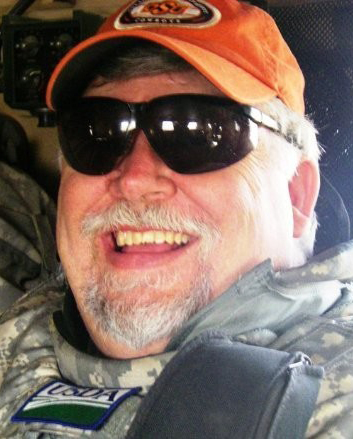Broyles, Patrick

Patrick Broyles
Patrick Boyles is a soil conservationist at the Natural Resources Conservation Service at the United States Department of Agriculture. While Broyles has held many positions with the NRCS, he cites his recognition from various offices for his hard work as the highlight of his career. In 1998, he received a Pendleton blanket from the American Indian-Alaskan Native Employee Association for the NRCS as a token of their appreciation for his work in the field of conservation. In addition, before moving from his position in Cottonwood Falls to his current position in Manhattan, the Middle Creek Watershed District recognized his work with a plaque.
“I wanted to do something that I enjoyed. It’s not high-paying, but I think I made the right choice.” - Patrick Broyles, 2005.
Broyles, P. J. (1978). Oklahoma tallgrass prairie species composition and production responses to rotation fertilization on different range sites (Doctoral dissertation, Oklahoma State University).
Broyles, P. J. (2010). Culturally Significant Plants.
Patrick Broyles was born on July 5, 1950 – the second of four children. He was raised in Oklahoma by Nick, an associate at Rockwell International, and Elzetta, a registered nurse. Broyles states that the character and people of Oklahoma shaped who he is and helped to establish his early interest in the environmental field. Broyles earned both a Bachelor of Science degree in agriculture and a Master of Science degree in rangeland management from Oklahoma State University in Stillwater. These degrees helped provide him with the technical knowledge essential for advancing his career.
Broyles’s first environmental job was as a range conservationist with the United States Department of Agriculture (USDA) Soil Conservation Service, currently the Natural Resources Conservation Service (NRCS), in Pawhuska, Oklahoma. This position allowed Broyles to work with local ranchers to help them determine the proper stocking rates (carrying capacity) on their lands, which, in turn, impacts the severity of soil erosion. Since 1977, Broyles has held several NRCS positions throughout the Midwest. He credits the advancements in his career to his technical knowledge, “I have a very good technical background in the science of plants and what to do to stop soil erosion,” says Broyles. He is a soil conservationist at the Plant Material Center in Manhattan, Kansas. His responsibilities include outreach to Indian tribes, conducting ethnobotany research, and studying plant medicinal and cultural uses.
Broyles has also been very active in minority and professional organizations. He is a board member of the American Indian-Alaskan Native Employee Association for the NRCS. In addition, he is a board member of the Society of American Indian Government Employees.
These highlights have been tempered by an incident that created a new position for Broyles. While working as a district conservationist in Cottonwood Falls, Broyles undertook work that was unpopular with many locals. This work included cooperating with the National Park Service to conduct a plant inventory and make stocking rate recommendations for establishing a new, highly contested park and seeking out and working with traditionally underserved landowners. Many long-time locals opposed such work, even though Broyles worked within agency guidelines. To address this opposition, a new position that met his needs and the desires of the Cottonwood Falls community was created for him in Manhattan. While the move was initially difficult, it was a positive change. Despite this low point, Broyles has stayed in the environmental field because it is work that he enjoys; in his words, “It’s not high paying, but I think I made the right choice” (2005).
While Broyles has held many positions with the NRCS, he cites his recognition from various offices for his hard work as the highlight of his career. In 1998, he received a Pendleton blanket from the American Indian-Alaskan Native Employee Association for the NRCS as a token of their appreciation for his work in the field of conservation. In addition, before moving from his position in Cottonwood Falls to his current position in Manhattan, the Middle Creek Watershed District recognized his work with a plaque. Broyles felt very honored to receive such honors.
Broyles has had much success with the NRCS and credits much of his success to his mentors, Dick Bogard, and Harland Ditz. Broyles describes Bogard, his district conservationist, as a very ethical person who always plays by the rules. He demonstrated
Broyles also serves as a mentor for American Indian students and collegians. He provides these individuals with advice and guidance related to their career searches and working with recruiters. Broyles reflects on his guidance, “I don’t tell them what to do. I let them make their own decisions. I just try to throw out different alternatives” (2005). Broyles suggests that students obtain a good education and participate in minority associations. Further, he suggests that students demonstrate a strong work ethic. He is confident they will go far if they can achieve that combination.
Interview conducted by Multicultural Environmental Leadership Development Initiative staff. 2016. University of Michigan – School of Natural Resources and Environment. Ann Arbor, MI.
Taylor, Dorceta (Ed.). 2005. The Paths We Thread: Profiles of the Careers of Minority Environmental Professionals. Minority Environmental Leadership Development Initiative, University of Michigan School of Natural Resources and Environment.